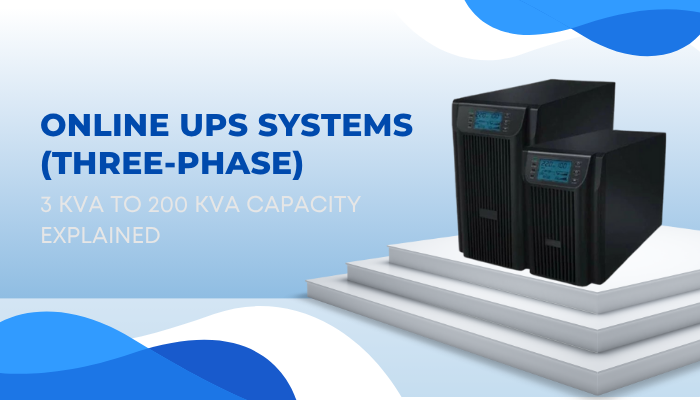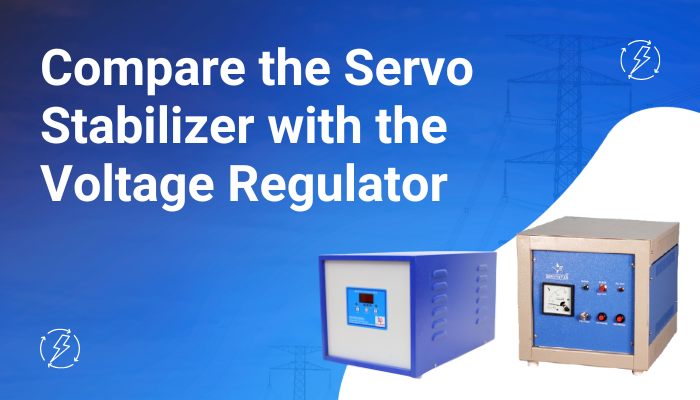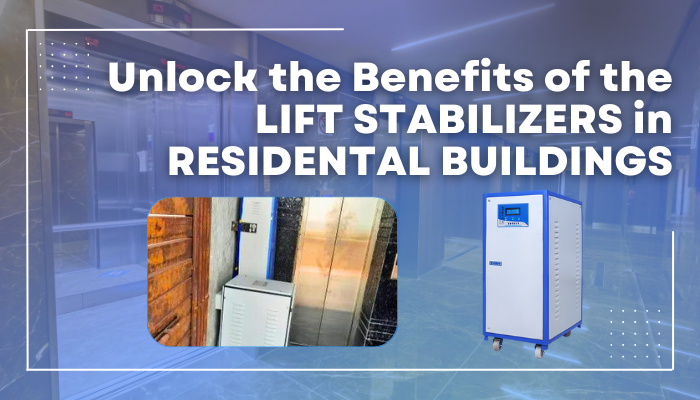What Are Voltage Fluctuations? Causes, Effects, and How to Protect Your Devices
Published on May 28, 2025
If you’ve ever noticed lights flickering in your home, devices restarting for no apparent reason, or fans slowing down intermittently, you’re likely dealing with a common but often underestimated issue—voltage fluctuations. These unpredictable changes in electrical voltage may seem harmless at first, but over time, they can lead to serious damage to your appliances and disruption in daily life.
Whether you’re managing a household or a business, understanding what voltage fluctuations are—and more importantly, how to control them—is essential. In regions where electrical stability is still a challenge, investing in the right protection matters. Many households and industries now turn to voltage solutions like a servo voltage stabilizer in India, especially in areas with frequent power variance. But what exactly causes these fluctuations, and how do they affect your electronics?
In this detailed guide, we’ll explain what voltage fluctuations are, what causes them, their impact on your devices, and the protective steps you can take to minimize risk.
What Are Voltage Fluctuations?
Voltage fluctuations are rapid, repeated changes in voltage levels—either an increase (surge) or decrease (sag)—from the standard power supply. In most Indian households, the standard voltage is 230V. Any deviation beyond the acceptable range (typically 160V–270V) can cause trouble.
Unlike blackouts or power cuts that completely interrupt electricity, voltage fluctuations are subtle but frequent disturbances. They’re like electrical hiccups: short-lived but highly disruptive. Over time, even small inconsistencies can damage sensitive electronics, reduce energy efficiency, and shorten appliance lifespans.
Understanding these fluctuations is the first step in choosing the right electrical protection. If you’ve already explored the market, you’ve probably encountered terms like “digital stabilizer” or “servo stabilizer.” These are not luxury add-ons—they’re critical safeguards, especially in power-sensitive environments.
What Causes Voltage Fluctuations?
Voltage instability can result from various internal or external factors. Let’s break them down:
Internal Causes (Within Your Property)
- Heavy Load Appliances
Devices like air conditioners, refrigerators, and washing machines draw high current at startup, causing momentary voltage dips. - Outdated or Damaged Wiring
Old wiring or improper installation can lead to poor conductivity, resulting in voltage drops or inconsistent supply. - Overloaded Circuits
Plugging too many high-wattage devices into a single power source causes resistance and voltage variation. - Faulty Switchboards
Loose connections, degraded MCBs, or switches that arc when toggled can all introduce voltage instability.
External Causes (Outside Your Property)
- Transformer Issues
Aging or overloaded transformers in your locality can struggle to maintain stable voltage, especially during peak demand. - Grid Imbalance
In rural and semi-urban areas, inconsistent grid supply is a major contributor to voltage fluctuations. - Environmental Factors
Lightning strikes, storm-damaged lines, or tree branches brushing against power cables can introduce massive surges or sags. - Unbalanced Solar or Generator Input
Local installations of renewable power systems, if not properly synchronized with the grid, can also lead to unstable voltage.
The presence of these issues has led to increased demand for professional-grade protection. This is where a trusted servo stabilizer manufacturer becomes important—offering tailored solutions to protect homes, industries, and sensitive setups.
Types of Voltage Fluctuations You Might Encounter
Not all fluctuations are the same. Here are the main types:
Voltage Sags (Dips)
Short-term decreases in voltage, usually when a high-powered device like a motor or compressor starts.
Voltage Surges (Spikes)
Sudden voltage increases, often caused by power restoration or external factors like lightning.
Brownouts
Longer durations of reduced voltage. Devices may continue operating but with reduced efficiency.
Electrical Noise
Irregularities caused by other electronic devices on the circuit, affecting performance and signal clarity.
Complete Voltage Drop
Severe sag that causes a full temporary power loss—common during faults or grid switching.
Recognizing the type of fluctuation can help you choose the right corrective device. If you’re in a high-risk area like South India’s industrial zones, working with a servo stabilizer manufacturer in Bangalore can help you get customized protection suited for such frequent inconsistencies.
Effects of Voltage Fluctuations on Electrical Devices
You might be wondering—are these fluctuations really that harmful? The answer is a resounding yes. Here’s how they can affect your appliances and systems:
Permanent Appliance Damage
Voltage surges can fry internal components such as capacitors, transformers, and PCBs in TVs, ACs, and refrigerators.
Data Loss and Hardware Failure
Voltage sags during operation can crash computers, causing data loss or even damaging hard drives.
Shortened Device Lifespan
Even moderate fluctuations can wear out internal circuits over time, reducing the expected life of your appliances.
Increased Energy Bills
Voltage instability causes inefficient power usage. Motors and compressors overcompensate during dips, consuming more electricity.
Fire and Safety Hazards
Surges can lead to overheating, short circuits, and in rare cases, electrical fires—especially in buildings with poor grounding.
How to Detect Voltage Fluctuations
Here are common warning signs that your home or office may be experiencing frequent voltage problems:
- Lights flicker or dim without cause
- Fans spin unevenly or slow down suddenly
- Refrigerators make unusual noises or trip frequently
- Computers and routers restart at random
- Frequent tripping of MCBs or fuses
- Buzzing sounds from switchboards or outlets
These are not just inconveniences—they’re signals of underlying electrical issues. If you’re experiencing any of these, it’s time to consider proper voltage regulation.
How to Protect Your Devices from Voltage Fluctuations
Once you’ve identified the risk, you need a plan of action. Here’s how to safeguard your devices:
- Install a Voltage Stabilizer: A voltage stabilizer regulates supply and maintains it within a safe operating range. It’s a frontline defense for air conditioners, refrigerators, TVs, and routers.
- Use Servo Voltage Stabilizers for Heavy Loads: These are more accurate and reliable, particularly for industrial or commercial use. They’re often programmable and handle wider voltage fluctuations with precision. If you’re located in a region with complex power needs—like tech parks or industrial setups—a servo stabilizer manufacturer in Bangalore can offer heavy-duty solutions built for such environments.
- Add Surge Protectors: These small devices prevent damage from voltage spikes. Ideal for sensitive electronics like computers, modems, or TVs.
- Upgrade Internal Wiring: Ensure your electrical load is supported by modern, insulated, and correctly gauged wires.
- Use Smart Plugs or Load Balancers: Some modern smart plugs can detect minor fluctuations and regulate output to connected devices.
- Schedule Electrical Audits: Periodic checks by a licensed electrician can identify hidden issues and optimize your electrical infrastructure.
Why Invest in Vertex Power’s Servo Voltage Stabilizer?
Among the many types of stabilizers available, servo voltage stabilizers are regarded as the most efficient and reliable, especially for commercial and high-load applications. Here’s why:
- Wide Operating Voltage Range
- Digital Display and Control Features
- Fast Correction Speed
- Protection Against Overload, Short Circuit, and Phase Imbalance
- Energy-Efficient Operation
From factories and hospitals to multi-floor office buildings, these stabilizers keep operations smooth. If you’re setting up infrastructure in a region prone to electrical disturbances, opting for a servo voltage stabilizer in India is a long-term investment in performance and protection.
Conclusion
So, what are voltage fluctuations? They’re more than just momentary flickers in your lighting—they’re warning signs of deeper electrical issues that can degrade, damage, or destroy your appliances and electronic systems. From internal wiring problems to external grid faults, these variations are a hidden threat to every home and office.
The good news? You’re not helpless. With the right tools like voltage stabilizers, surge protectors, and professional guidance, you can eliminate most of the risks. Whether you’re protecting a single home appliance or managing industrial equipment, having a well-planned electrical protection setup is critical.
If you’re sourcing protection for a business, especially in the southern region, consulting a servo voltage stabilizer manufacturer in Bangalore can give you access to advanced, tailor-made solutions that offer peace of mind and long-term savings.
Don’t wait until damage is done—act today to stabilize your power supply and secure your investments.
What are voltage fluctuations?
Voltage fluctuations are rapid increases or decreases in electrical voltage from the standard range, which can affect the performance of electronic devices.
Are voltage fluctuations dangerous?
Yes, they can damage electronics, cause data loss, reduce appliance lifespan, and pose safety hazards.
What causes voltage fluctuations at home?
High-load appliances, faulty wiring, overloaded circuits, poor transformers, and grid instability are common causes.
Can I prevent voltage fluctuations?
While you can’t prevent them completely, you can minimize their impact using stabilizers, surge protectors, and proper wiring.
What type of stabilizer is best for commercial use?
A servo voltage stabilizer is ideal due to its precision and durability in handling wide voltage ranges.
How do I know if I need a stabilizer?
If your area has frequent light flickering, device restarts, or power instability, a stabilizer is recommended.
Powering Your Operations, Guaranteed.
Downtime is not an option. Our industrial power solutions are engineered for maximum uptime and reliability. Ensure your critical systems are always online.
Speak to an EngineerAbout Rajesh Kumar
Rajesh Kumar is a Senior Technical Consultant at Vertex Power Solutions with over a decade of experience in power management systems and energy-efficient electrical solutions. He specializes in designing and implementing high-performance stabilizers, UPS systems, and transformers for industrial, healthcare, and IT sectors. Passionate about innovation and reliability, Rajesh has been instrumental in helping businesses reduce downtime, enhance energy efficiency, and achieve long-term operational stability. Through his insights and expertise, he continues to guide organizations in adopting sustainable and future-ready power infrastructure




